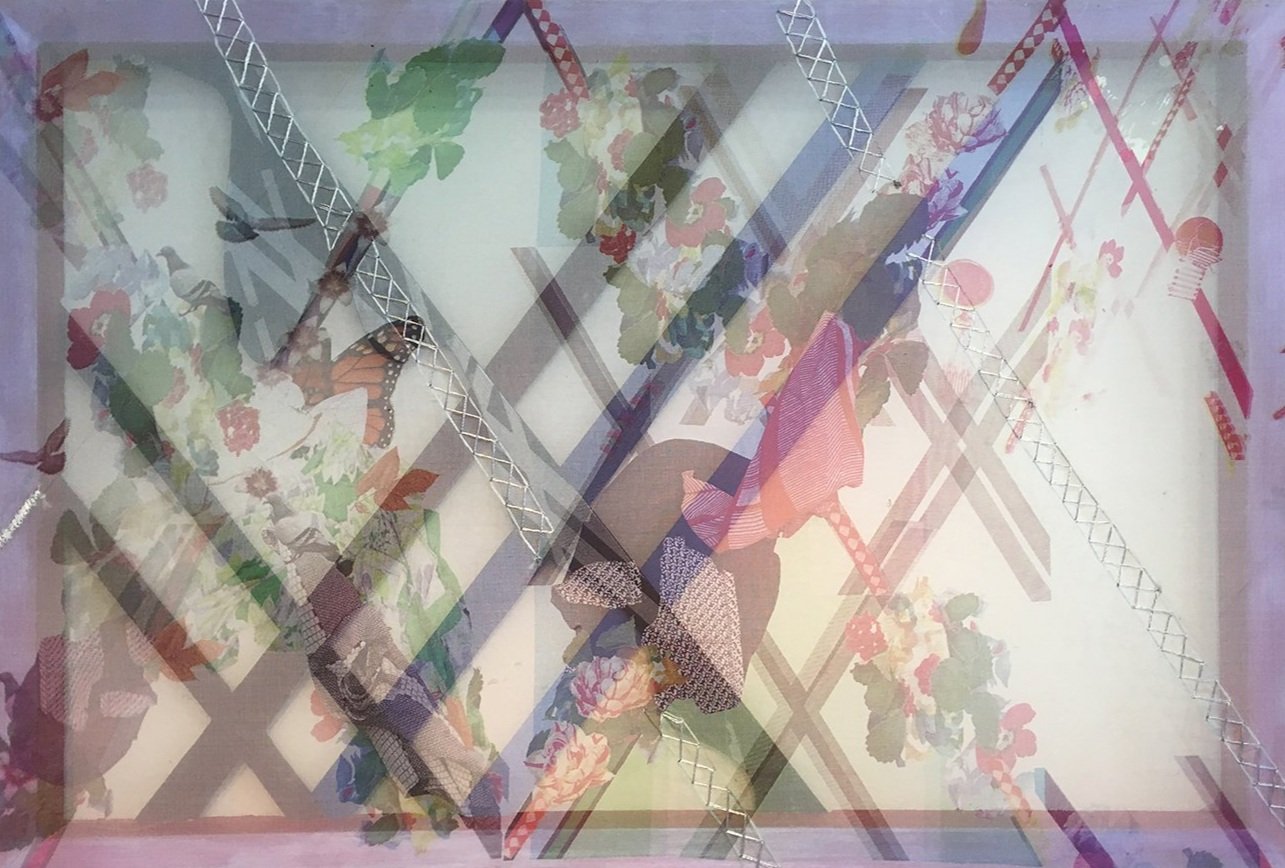An Interview with Eva Wylie
We met Eva Wylie when we were neighbors at this year’s Editions/Artists’ Book Fair in New York. Eva spent some time at the Dolphin Press & Print booth along with fellow faculty members and students from The Maryland Institute College of Art, Baltimore (MICA). Dolphin is a professional printmaking and letterpress shop housed in the Printmaking Department at MICA and they were sharing some wonderful pieces, including a pair of editions with acclaimed artist James Siena.
Eva splits her time between Baltimore and Philadelphia and keeps a studio at the fabulous Crane Arts Building in Philly (lucky lady). Before scrolling through these accompanying images, keep in mind most of them are CMYK photographic reproductions printed directly onto the gallery walls. To borrow a wonderful line from the accompanying text for her 2016 exhibition Down the Line; “Printing directly onto the gallery walls and found materials, Wylie scrapes, folds and makes incisions as her printed imagery accumulates on the surface.” And what fascinating and joyous accumulations!
Valley Broom, Screenprint and embroidery on silk, acrylic on wood
When did you start printing?
I used my first printmaking class in college to print hundreds of images that became collage material for temporal site-specific installations. It wasn’t until graduate school (Tyler School of Art, Philadelphia, PA) that I began working with photographic imagery.
Where do you make your work? Home studio? Shared print space?
I have a studio in the Crane Arts Building in Philadelphia, PA. I have been in the same studio since 2006 and live only about two blocks away. I am also on the board of Second State Press, a shared printmaking studio in the same building. I love being a pedestrian and often use imagery found walking to and from my studio in the South Kensington neighborhood of Philadelphia. There are stretches of time when I don’t leave my zip code.
Embedded Threads. Installation at Gallery Joe, Philadelphia, PA. Screenprint on wall
Embedded Threads (detail). Installation at Gallery Joe, Philadelphia, PA. Screenprint on wall
How do you see your print background informing your more expanded practice?
I like the freedom of working large and site-specific, but try to maintain the intimacy of viewing traditional prints such as small etchings. I use a CMYK screenprinting process to create the illusion of three dimensionality, but upon close inspection of the work, the images flaunt their flatness. My process allows for printed images to be compressed within frames and across large wall spaces. I stage conversations between nature and artifice, the organic and the synthetic, and the present and the past.
Wylie's Down the Line, a site-specific wall installation at Spacecamp in Baltimore, MD. 2016
Untitled, Screenprint on silk, acrylic on wood
Have you seen a change in how printmaking is taught/thought about since you were a student?
I currently teach Printmaking at The Maryland Institute College of Art, Baltimore, MD. Courses have become more thematic, while still providing a strong foundation of traditional techniques. The idea comes first and finding the medium that best suits this idea is always the focus. I also make my students wear gloves all the time.
Close To (Near Berserk). Screenprint on fabric, mixed media.
Who would you love to collaborate with?
Printmaking inherently lends itself to collaboration and I love seeing how other people work. I like collaborating with friends and people with a deep interest in their craft such as weavers, papermakers, cabinet makers, master printers etc.
Roaring Garden (Installation at Vox Populi Gallery). Screenprint on fabric, velvet, rope
Roaring Garden (Installation at Vox Populi Gallery). Screenprint on fabric, velvet, rope
Where are some of your favorite spaces in Baltimore or Philly for contemporary art or design?
I like seeing work at artist run spaces like Resort, Baltimore, MD or Vox Populi, Philadelphia, PA where I was a member for six years. I try to never miss the exhibitions at the Fabric Workshop and Museum or The Print Center in Philadelphia, PA. Ulises is in my Philadelphia neighborhood and I like popping in there over the weekend.
What are you working on at the moment?
I am currently collaborating with Philadelphia, PA based artist/animator Jennifer Levonian. We are creating an animation that will be shown at Locust Projects in Miami, FL in mid-February. The animation will be made of hundreds of printed and painted cut-outs. In the animation, a snake enters the room through an open window and chaos ensues. This work is inspired by a true story from my childhood. In this re-imagining the snake could also be read as a symbol of something sinister which comes into view and causes damage, a possible metaphor for the current American political climate.
Untitled, Screenprint and embroidery on silk, acrylic on wood.






